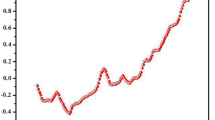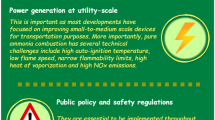Abstract
Emission test chambers or cells are used to determine organic vapour emissions from construction products under controlled conditions. Polymeric car trim component emissions are typically evaluated using direct thermal desorption/extraction. The Microchamber/Thermal Extractor (μ-CTE, Markes International) was developed to provide both a complementary tool for rapid screening of volatile organic compound (VOC) emissions—suitable for industrial quality control—and a means for thermal extraction of larger, more representative samples of car trim components. To determine the degree of correlation between conventional emission test methods and the microchamber, experiments were carried out under different conditions of temperature, air change rate and sample conditioning time. Good quantitative and qualitative correlation was obtained for measurements at ambient temperature. Moreover, it was shown that ambient-temperature emissions data collected using the μ-CTE as rapidly as possible—i.e. with minimal or no sample conditioning time—nevertheless provided a reliable guide as to how well that material would perform in subsequent 3-day chamber tests of VOC emissions. The parameters found to have the greatest influence on data correlation for experiments carried out at elevated temperatures were the sample mass (for bulk emissions testing) and the conditioning time. The results also showed that, within the constraints of inherent sample homogeneity, the μ-CTE gave reproducible emissions data, despite its small sample size/capacity relative to that of conventional chambers. Preliminary results of modelling the air flow within a microchamber using computational fluid dynamics showed a high degree of turbulent flow and two potential areas of still air which could cause sink effects. However, the experimental data reported here and in previous studies showed enhanced recovery of semivolatile components from the μ-CTE relative to a recovery from a 1 m3 conventional chamber. This indicates that if these areas of relatively still air are present within the microchamber, they do not appear to be significant in practice.











Similar content being viewed by others
Notes
The boiling points of the compounds used were 80 °C (C-I), 198 °C (C-II) and 310 °C (C-III). The particular compounds are not allowed to be mentioned by the authors because they are used for quality assurance in our laboratory.
References
Brasche S, Bischof W (2005) Int J Hyg Environ Health 208:247
Robinson J, Nelson WC (1995) National human activity pattern survey data base, USEPA
World Health Organization (1989) Indoor air quality: organic pollutants. EURO reports and studies no. 111. World Health Organization, Copenhagen
European Communities (1997) ECA-report no. 19: Total volatile organic compounds (TVOC) in indoor air quality investigations. Office for Official Publications of the European Communities, Luxembourg
Mølhave L, Clausen G, Berglund B, De Ceaurriz J, Kettrup A, Lindvall T, Maroni M, Pickering AC, Risse U, Rothweiler H, Seifert B, Younes M (1997) Indoor Air 7:225
DIN EN ISO 16017-1 (2000) Beuth, Berlin
European Commission (1989) Indoor air quality and its impact on man. Report no 2. European Commission, Luxembourg
Singer BC, Coleman BK, Destaillats H, Hodgson AT, Lunden MM, Weschler CJ, Nazaroff WW (2006) Environ Sci Technol 40:4421
Albrectsen O (1988) Proc Healthy Buildings 1988, Stockholm 3:25
Uhde E (1998) PhD thesis, Technical University Braunschweig
Meyer U, Möhle K, Eyerer P, Maresch L (1994) Staub—Reinhalt Luft 54:137
Gunnarsen L, Nielsen PA, Wolkoff P (1993) Proc Indoor Air 2:507
Gunnarsen L, Nielsen PA, Nielsen JB, Wolkoff P, Knudsen H, Thøgersen K (1993) Proc Indoor Air 2:501
DIN EN ISO 16000-10 (2006) Beuth, Berlin
ASTM D7143-05 (2005) ASTM book of standards 11.03
Scherer C, Schmohl A, Breuer K (2006) Proc Healthy Buildings 4:29
Scherer C, Schmohl A, Breuer K, Sedlbauer K, Salthammer T, Schripp T, Uhde E, Wensing M (2006) Gefahrstoffe—Reinhalt Luft 66:87
Uhde E, Salthammer T (2006) Indoor Air 16:158
DIN EN ISO 16000-9 (2006) Beuth, Berlin
German Association of the Automotive Industry (2005) Recommendation VDA 276
Müller B (2002) Fortschritt-Bericht VDI Reihe 15 no 242
Schripp T, Uhde E, Wensing M, Salthammer T (2006) Proc Healthy Buildings 4:23
Tapeten-Gütesicherung RAL-GZ 479 11. (2002) Beuth, Berlin
Meininghaus R, Fuhrmann F, Salthammer T (1996) Fresenius’ J Anal Chem 356:344
Uhde E, Bednarek M, Fuhrmann F, Salthammer T (2001) Indoor Air 11:150
Salthammer T, Schriever E, Marutzky R (1993) Toxicol Environ Chem 40:121
Umweltbundesamt (2005) AgBB evaluation scheme. http://www.umweltbundesamt.de
Greim H (2002) Gesundheitsschädliche Arbeitsstoffe. Toxikologisch-arbeitsmedizinische Begründungen von MAK-Werten. Wiley, Weinheim
Ritter EJ, Scott WJ Jr, Randall JL, Ritter JM (1987) Teratology 35:41
DIN EN ISO 16000-11 (2006) Beuth, Berlin
German Association of the Automotive Industry(2002) Recommendation 278
Geller S, Krafczyk M, Tölke J, Turek S, Hron J (2006) Comput Fluids 35:888
d’Humi’eres D, Ginzburg I, Krafczyk M, Lallemand P, Luo LS (2002) Philos Trans R Soc Lond Ser A 360:437
Acknowledgements
The authors gratefully acknowledge support by Markes International. This work was supported financially by the research project “Development of a simplified test method for the characterisation of chemical and sensory emissions” of the Fraunhofer-Gesellschaft. The authors thank Elizabeth Woolfenden and Hubertus Wichmann for valuable comments and careful revision of the manuscript.
Author information
Authors and Affiliations
Corresponding author
Rights and permissions
About this article
Cite this article
Schripp, T., Nachtwey, B., Toelke, J. et al. A microscale device for measuring emissions from materials for indoor use. Anal Bioanal Chem 387, 1907–1919 (2007). https://doi.org/10.1007/s00216-006-1057-2
Received:
Revised:
Accepted:
Published:
Issue Date:
DOI: https://doi.org/10.1007/s00216-006-1057-2




